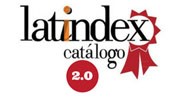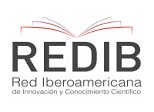Repositioning of the Fragment of the Crown of a Tooth Separated by Dental TraumaLuis A. Jeffers Duarte
Keywords:
trauma of the tooth; tooth fracture; treatment.Abstract
The conservation of the dental tissues is the primary purpose of the dental profession; A serious threat to this objective is the treatment of dental trauma and its supporting tissues. The dangerous effects of these injuries often result in the loss of teeth, which causes problems of aesthetics and function in the patients. Epidemiological studies conducted in different countries indicate that dental injuries are progressively increasing in recent years as a result of changes introduced in the modern lifestyle and are considered as the second cause of dental care, attributable mainly to motor vehicle accidents, physical activity and sports practice. From early times, injuries caused to the oral complex by trauma motivated the wisdom of those dedicated to solving the physiological limitations that they caused. It was then that man created the most unsuspected techniques to solve this problem. It can be assured that the concern for injuries caused by trauma to the oral complex is as old as the evidence of the profession itself. The scheduled treatment of traumatic lesions of the teeth can encompass a wide range of therapeutic procedures such as polishing the sharp edges to avoid lacerations on the tongue and lips, coating the pulp with calcium hydroxide, and resin restorations. The immediate treatment of traumatized teeth is the key to success and is of extraordinary importance for the rehabilitation of the patient. In the case presented, the fractured fragments of the upper central incisors were replaced in a 12-year-old patient, and at 27 months there was no evidence of damage to the pulpal, periapical or periodontal tissues. It is concluded that when the fragment is from the same dental tissue, there is no possibility of rejection and the dentists can carry it out each time the patient retains the fragment of the fractured tooth.
References
Bouza Vera, M., Gou Godoy, A., & Barrios Rodríguez, T. (2014). Alternativa de tratamiento de fractura no complicada de corona por medio de adhesión del fragmento. Presentación de un caso. Revista Médica Electrónica, 36(Supl. 1), 763-770. Recuperado de http://scielo.sld.cu/scielo.php?script=sci_arttext&pid=S1684-18242014000700009&lng=es&tlng=es.
Concepción Obregón, Tebelio, Sosa Hernández, Hilda Paula, & Guerra Pando, José Antonio. (2013). El trauma dental en la Atención Primaria de Salud. Revista de Ciencias Médicas de Pinar del Río, 17(2), 69-77. Recuperado de http://scielo.sld.cu/scielo.php?script=sci_arttext&pid=S1561-31942013000200008&lng=es&tlng=pt.
Díaz Cruz, Carlos Enrique, Rodríguez Cabrera, Kenia María, & Rosales Álvarez, Zurelys. (2009). Efectividad de la terapia láser en el tratamiento de las fracturas no complicadas de corona. Revista de Ciencias Médicas de Pinar del Río, 13(1), 158-167. Recuperado de http://scielo.sld.cu/scielo.php?script=sci_arttext&pid=S1561-31942009000100018&lng=es&tlng=pt
García Ballesta, Carlos, Pérez Lajarín, Leonor, & Cortés Lillo, Olga. (2003). Un nuevo diseño en el tratamiento de las fracturas de la corona por medio de la adhesión del fragmento. RCOE, 8(2), 145-151. Recuperado de http://scielo.isciii.es/scielo.php?script=sci_arttext&pid=S1138-123X2003000200003&lng=es&tlng=pt.
González Fortes, B., Mursulí Sosa, M., Cruz Milián, MC., Rodríguez Bello, H. (2007). Traumatismo dental. Enfoque bioético. Gac Méd Espirituana, 9(1). Recuperado de: http://revgmespirituana.sld.cu/index.php/gme/article/view/695/534
González García, Xiomara, Crespo Sánchez, Marcia, Cardentey García, Juan, & Porras Mijans, Osmary. (2016). Traumatismos dentales en niños de 7 a 11 años. Revista de Ciencias Médicas de Pinar del Río, 20(4), 99-107. Recuperado de http://scielo.sld.cu/scielo.php?script=sci_arttext&pid=S1561-31942016000400012&lng=es&tlng=pt.
Legañoa Alonso, Jacqueline, Landrian Díaz, Clara, Arias Herreras, Sury, Legañoa Avello, Jorge, & Travieso Gutiérrez, Yusimi. (2009). Nivel de información sobre traumatismos dentoalveolares en padres y educadores. Revista Archivo Médico de Camagüey, 13(4) Recuperado de http://scielo.sld.cu/scielo.php?script=sci_arttext&pid=S1025-02552009000400007&lng=es&tlng=es.
López Larquin, N., Dobarganes Coca, A., Zaragozí Rubio, E., González Vale, L., & Calderón Betancourt, J. (2016). Traumatismos dentoalveolares en niños atendidos en el policlínico de especialidades pediátricas de Camagüey. Revista ElectróNica Dr. Zoilo E. Marinello Vidaurreta, 41(3). Recuperado de http://www.revzoilomarinello.sld.cu/index.php/zmv/article/view/468
Quintero, J. V. U., Ayala, A. H., Plata, R. G., & Szalay, E. R. (2017). Tratamiento restaurador de lesiones dentales traumáticas. Reporte de tres casos clínicos. Revista odontológica mexicana, 21(3), 185-197. Recuperado de: https://www.sciencedirect.com/science/article/pii/S1870199X17300587
Ramírez Acosta, Yailín, Verdecia Moreno, Alexis, Correa Acosta, Delibexi, Galán Gutierrez, Eudenis, & Rodríguez del Toro, Mercedes. (2014). Traumatismo dentario en atletas santiagueros de alto rendimiento. MEDISAN, 18(8), 1051-1057. Recuperado de http://scielo.sld.cu/scielo.php?script=sci_arttext&pid=S1029-30192014000800003&lng=es&tlng=pt.
Rey Ávila, María Elena, Hernández Gutiérrez, Daymí, & Concepción Delgado, Amarilis. (2013). Replacement of the fractured dental segment: a treatment alternative. Medicentro Electrónica, 17(2), 83-86. Recuperado de http://scielo.sld.cu/scielo.php?script=sci_arttext&pid=S1029-30432013000200008&lng=es&tlng=en.
Rodríguez Cabrera, Kenia María, Díaz Cruz, Carlos Enrique, Rosales Álvarez, Zurelys, Victorero Gorte, María, & Llano Montanet, Mercedes. (2009). Efectividad de la terapia láser en el tratamiento de las subluxaciones por trauma dentario. Revista de Ciencias Médicas de Pinar del Río, 13(2), 62-70. Recuperado de http://scielo.sld.cu/scielo.php?script=sci_arttext&pid=S1561-31942009000200008&lng=es&tlng=es.
Zhang, Y., Zhu, Y., Su, W., Zhou, Z., Jin, Y., & Wang, X. (2014). A retrospective study of pediatric traumatic dental injuries in Xi'an, China. Dental traumatology, 30(3), 211-215. Recuperado de: http://onlinelibrary.wiley.com/doi/10.1111/edt.12075/full
Downloads
Published
How to Cite
Issue
Section
License
Los artículos enviados a la Revista Científica Hallazgos21 deberán ser totalmente originales e inéditos.
Los autores son los responsables de los textos y las imágenes incluidas en los artículos y no necesariamente reflejan el pensamiento de la editorial o de la Pontificia Universidad Católica del Ecuador, Sede Esmeraldas (PUCESE).
Los autores disponen cederle a la Revista Científica Hallazgos21 todos los derechos inherentes para la edición, publicación y distribución o divulgación del mismo.
Se autoriza a las revistas firmantes de los acuerdos de Encuentros de Revistas Latinoamericanas para reproducir en parte o totalmente los artículos con la sola mención de la fuente claramente señalada.







